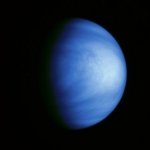Displaying items by tag: Venus
Venus Spectral Rocket (VeSpR)
The Venus Spectral Rocket (VeSpR) is a two-stage system, combining a Terrier missile - originally built as a surface-to-air missile and later re-purposed to support science missions - and a Black Brant model Mk1 sounding rocket with a telescope inside. Integration took place at NASA's Wallops Flight Facility in Virginia.
The VeSpR missions is to probe the atmosphere of Venus. It will study Venus atmospheric loss. VeSpR will peek at Venus from above Earth's absorbing atmosphere.
The experiments will look at ultraviolet (UV) light that is being emitted from Venus' atmosphere, which can provide information about the history of the planet's water. Measurements like these cannot be done using Earth-based telescopes because our atmosphere absorbs most UV light before it reaches the ground.
Cassini–Huygens (spacecraft)
Cassini–Huygens is a NASA-ESA-ASI robotic spacecraft sent to the Saturn system. It has studied the planet and its many natural satellites since arriving there in 2004, also observing Jupiter, the Heliosphere, and testing the theory of relativity. Launched in 1997 after nearly two decades of gestation, it includes a Saturn orbiter (called Cassini) and an atmospheric probe/lander for the moon Titan (called Huygens), which entered and landed on Titan in 2005. Cassini is the fourth space probe to visit Saturn and the first to enter orbit, and its mission is ongoing as of 2012.
It was launched on October 15, 1997 and entered into orbit around Saturn on July 1, 2004, after an interplanetary voyage which included flybys of Earth, Venus, and Jupiter.
On December 25, 2004, Huygens separated from the orbiter at approximately 02:00 UTC. It reached Saturn's moon Titan on January 14, 2005, when it entered Titan's atmosphere and descended downward to the surface. It successfully returned data to Earth, using the orbiter as a relay. This was the first landing ever accomplished in the outer Solar System.
Sixteen European countries and the United States make up the team responsible for designing, building, flying and collecting data from the Cassini orbiter and Huygens probe. The mission is managed by NASA’s Jet Propulsion Laboratory in the United States. Huygens was developed by the European Space Research and Technology Centre, whose prime contractor was Alcatel of France. Equipment and instruments for the probe were supplied by many countries. The Italian Space Agency (ASI) provided the Cassini probe's high-gain radio antenna, and a compact and lightweight radar, which serves as a synthetic aperture radar, a radar altimeter, and a radiometer.


